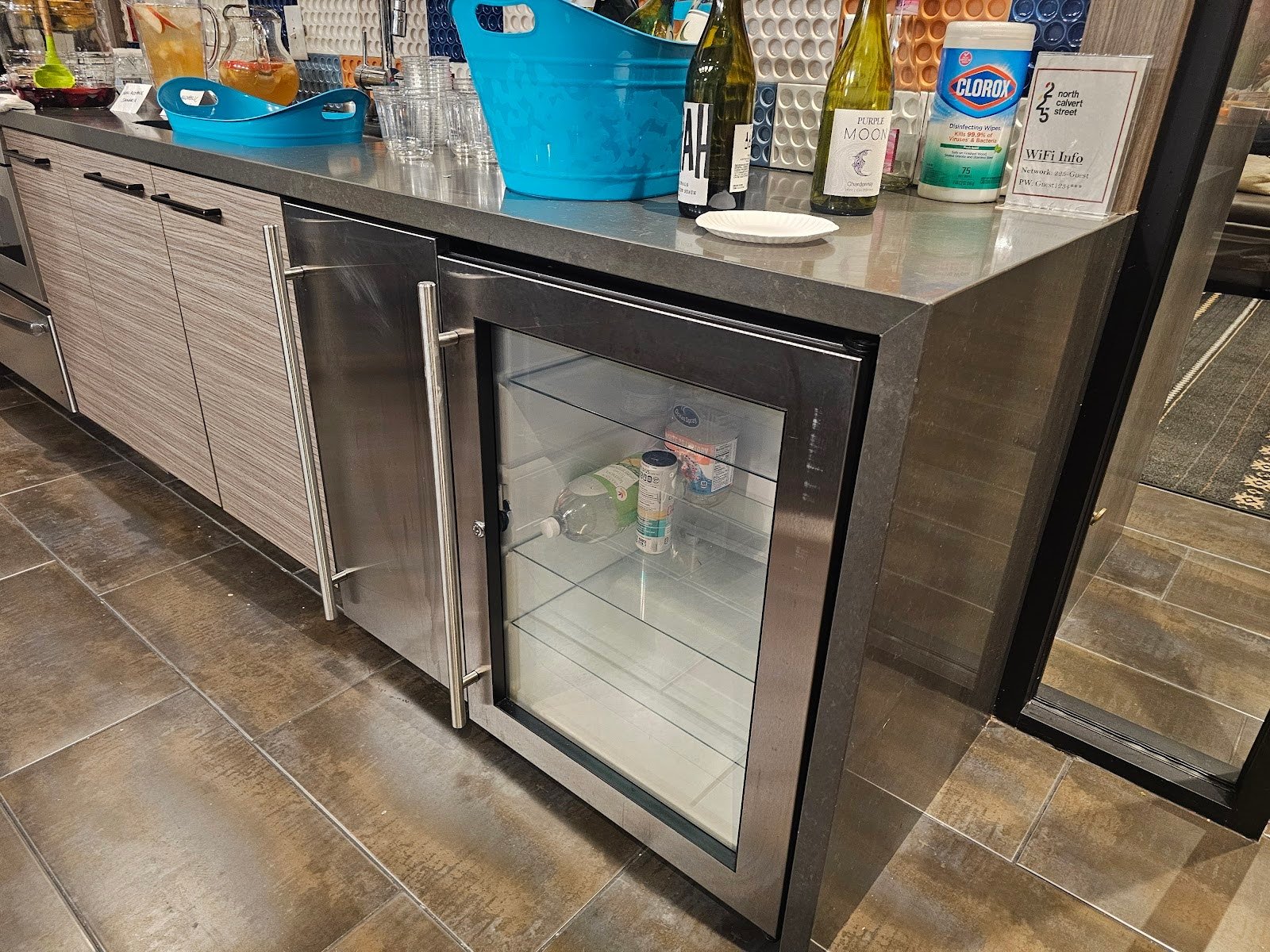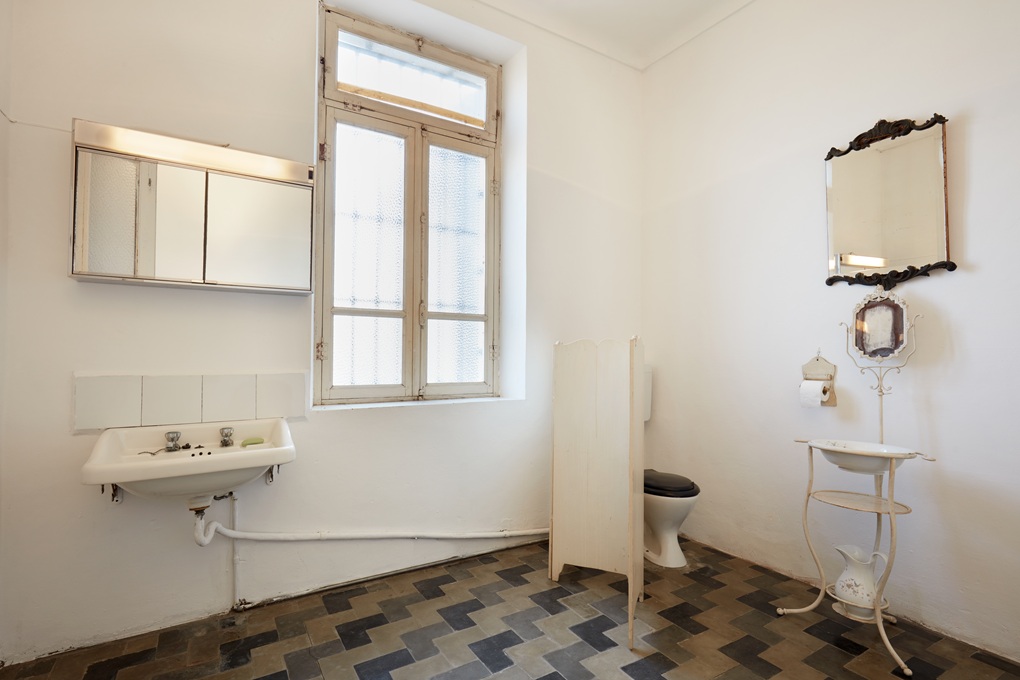Double Basin Kitchen Sink in DC Homes
We looked at a handful of double basin sinks here on our website. One of the ones we looked at a while back is similar. Particularly this is a farmhouse style sink with an edge that turns down instead of the bowl or sink basin just dropping into the countertop. Sinks are commonly also undermounted, but in many cases where they are undermounted they undermount through openings in the countertop where the countertop maintains a continuous edge across the front above the front face of the cabinets.
Here though the opening in the countertop is a notch that is cut out of the countertop. The solid surface countertop basically stops at both sides of the sink and then a stainless steel metal continues from the basin of the sink itself, across the top of the countertops and down in a vertical facing as well. We aren’t really sure which methodology or configuration is better or worse but this particular style accentuates the finish of the sink. It makes that finish and color a bit more prominent in the overall aesthetic design of the kitchen.
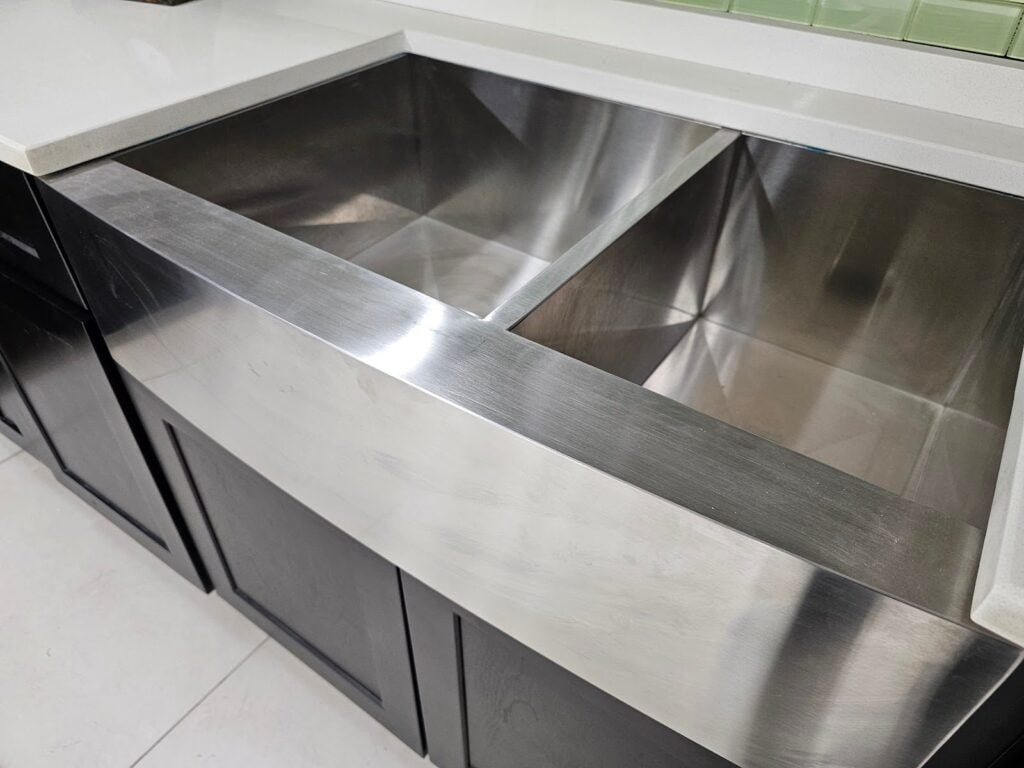
In general, stainless steel sinks are a relatively contemporary design element. They weren’t used often in historic types of construction and or plumbing or fixture installations. Commonly, in high school science classes, for example, you may have seen stainless work surfaces or tables. Stainless steel is a hard and durable table top material that can resist many different types of marring, scratching, and staining. The material isn’t perfect though because while it does resist some of these types of damage, it isn’t completely damage-proof. Stainless steel, although it’s known for its properties to resist oxidation can even still rust, in certain contexts.
Stainless steel shelves were also common in some of the first popularized types of open shelf concepts. Similar to pressed ceiling tiles, stainless steel sinks are often formed by high strength pressure into or around mold forms. This process is often referred to as deep drawing. In some manufacturing processes the mold will be referred to as a die and the die and a punch are pressed together with the sheet metal blank between them, in turn bending and shaping the sheet metal.
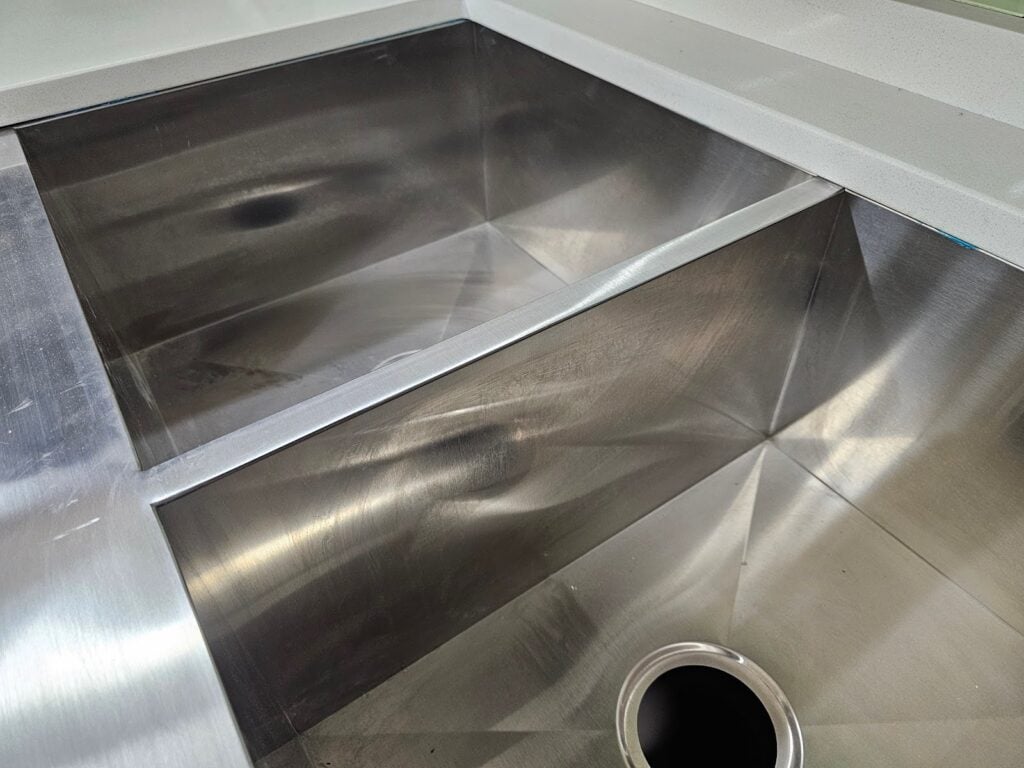
Another common process for manufacturing of sheet metal stainless steel sinks is a fabrication process of cutting and shaping and rewelding to join the meeting points of the individual pieces of the metal. The stamping process is easier from an assembly or repetitive manufacturing type process, but the rectilinear edges shown in sinks, like the ones here above and below are often made with the fabrication process instead of the drawn press process.
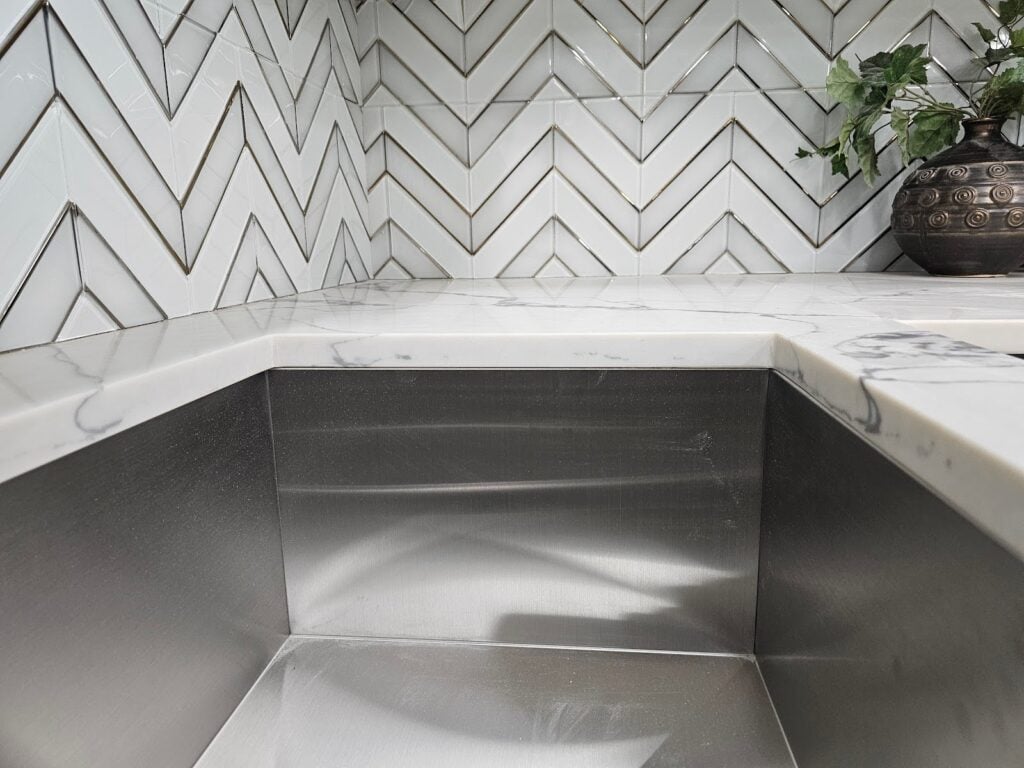
By comparison, a typical stainless steel undermount sink with a single basin, is shown in the picture below. This type of sink is also a modern or contemporary style. The sink is very large and deep which makes washing dishes and typical kitchen type tasks much easier. It just has a single Basin now and that actually makes it a larger more ample sink because it’s not divided into two different compartments. However, the two separate compartments might be useful for pre-soaking dishes or separating dishwashing tasks into two different categories or divided sections.
The hole used for a drain in a common sink in the United States is roughly 3.5 inches in diameter. In other parts of the world though, in some cases, the drain assemblies will be very different. It’s common in the United States for disposers to be connected to sink drains. Disposers are essentially electric appliances or fixtures that allow the water to flush out from the drain of the sink and food debris in large chunks of garbage will be caught. In increments, the disposer can be turned on while water is running at full volume.
When the disposer spins, it has macerating teeth that chew up the food debris and then allow the waste to flow into the wastewater piping directly from the sink and disposer. Disposers help clean up faster without separating the food waste removal from the scrubbing tasks of the cleaning process. Therein having a sink with an attached disposer may speed up the cleaning process.
It’s also easier to connect a large water spraying faucet to a large sink basin. Most other smaller sink basins can also be compatible with a high power sprayer but using a high power sprayer in a small basin may lead to a significant amount of splash back which would cause the adjacent surfaces and walls to become wet. That type of nuisance, on a repetitive basis will lead to deterioration of the wall surfaces and or work surfaces. In simple terms, is just bad for a kitchen, to have water sprayed and splashed all about.
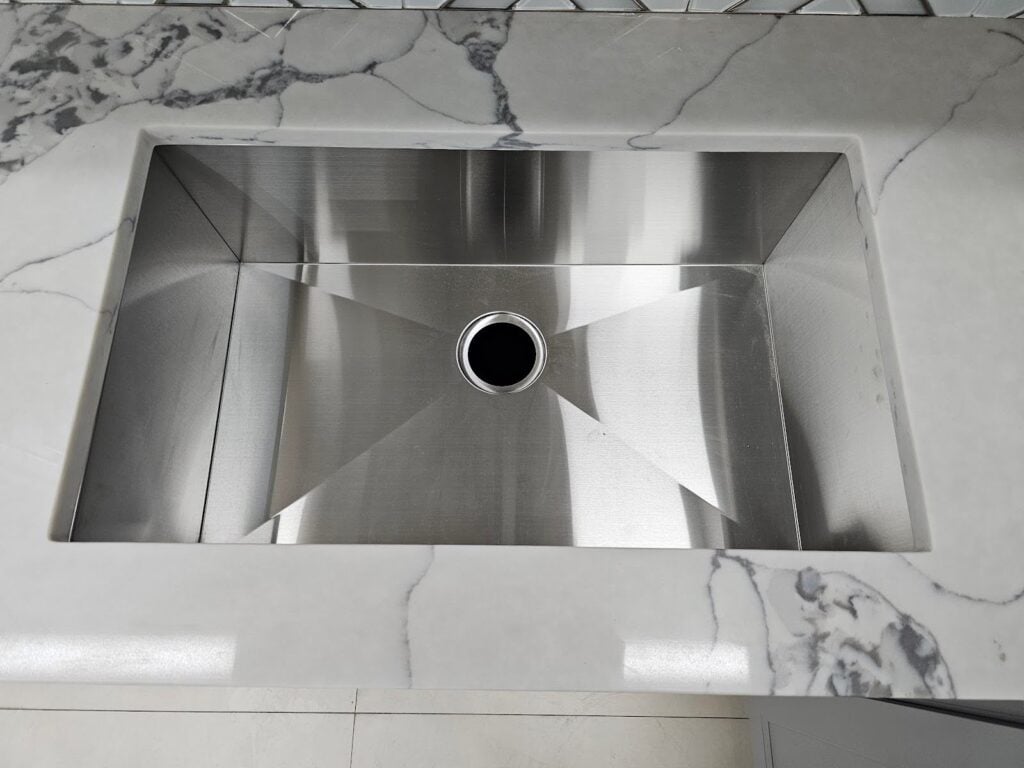
Dupont Kitchen & Bath Can Help
As dedicated and local DC metropolitan kitchen and bath builders and installers, we pride ourselves on turning your visions into reality. Your kitchen and bathrooms can reflect your unique style and be designed with personalized aesthetics. It can be a process from creative designs to the realization of your dream space. Specializing in kitchen and bath construction, we bring expertise and skills to every project. If you’re contemplating a renovation, upgrade, or modernization in the local market, we’re happy to be your team. Consult with us, and we can start together on a path to redefine and elevate your DC living experience.
You can visit our company website at https://dupontkitchenbathdc.com/
Here at our website you will find a simple and convenient web form that you can fill to contact us quickly.

